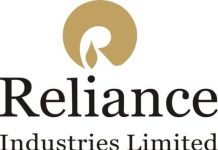Abstract
Climate change, driven by greenhouse gas emissions and deforestation, stands as one of the most pressing global challenges. The urgency of addressing this crisis is emphasized by the fact that 2023 holds the record as the warmest year1 for both land and ocean. Non-renewable sources of energy, such as coal, oil, and gas, contribute to nearly 75% of global emissions. Therefore, amidst the global push for carbon neutrality, the need to fast-track the adoption of end-to-end accurate and dependable emission management cannot be overlooked or delayed. India has committed to ambitious goals, with plans to achieve net-zero emissions by 2070 and meet at least 50% of the country’s energy requirements with renewables by 2030. With the right emissions measurements/monitoring followed by actions for emissions reduction in the manufacturing industry is an urgent global need.
Introduction
the primary source of greenhouse gas emissions in global industrial operations continues to be the consumption of fossil fuels, wherein carbon dioxide (CO2) and methane play pivotal roles. The potency of methane is about 27-30 times more impactful than CO2. Methane leaks are a significant contributor to climate change and a critical cost for business. In 2021, losses in the oil and gas industry cost a staggering $19 billion2 There is a pressing need for effective measures for measurement, control, and reduction immediately to stem global warming in the future. Many industries currently lack a baseline for demonstrating year-on-year improvements in reducing emissions. Tracking and reducing emissions can improve process uptime through predictive maintenance, thereby reducing product losses across the entire process. This lack of transparency poses challenges for the environment, internal targets, regulators, investors, and other stakeholders.
There are two key challenges that effective emissions management face. Firstly – it is difficult for industrial companies to measure methane emissions and secondly, complexity of collection of the data efficiently from various sources. The need of the hour is end-to-end emissions management solutions in industrial settings that help measure, monitor, report, and reduce emissions. These solutions offer cost-effective and automated ways to navigate the green-energy switch playing a crucial role in controlling and reducing greenhouse gas Scope 1 emissions across oil and gas, refining, chemicals, power, metals, mining, and other process industries.
Key Drivers for Industrial Emissions Management
Emissions management will evolve in the next 5-10 years through policies, regulations, and incentives happening across the world. Governments around the world have implemented regulations and standards to limit and monitor emissions from industries and businesses. Consumers, stakeholders, and investors are increasingly interested in supporting sustainable and socially responsible companies, and the focus on reducing carbon footprint will increase. Companies will gain a competitive advantage by reducing their environmental impact, reputation improvement, and attracting environmentally conscious customers and partners. Reducing emissions can lead to cost savings that include energy efficiency improvements, waste reduction, and reduced regulatory compliance costs.However, there are also financial and reputational risks associated with emissions management, such as regulatory fines, legal liability, and negative media coverage.
What is Exciting about Emissions Management?
The prioritization of emission management extends beyond environmental concerns thereby affecting the reputation and business performance of industries. Firstly, over-reporting / incorrect reporting of emissions due to erroneous mass balance calculations can potentially add to costs while eroding reputation. Secondly, ineffective audit management makes it difficult to identify trends and reduce leaks, leading to fines and decreased profits.
Advancements in research and development have brought forth innovative solutions that offer an automated end-to-end approach, e.g. wireless greenhouse gas detectors rapidly detect and measure leaks, visualization, and trending tools support predictive maintenance, reducing plant downtime, while analytics pinpoint gas leak locations for maintenance and process optimization.
Emissions Management is a cost-effective, automated end-to-end solution to rapidly detect, measure, and locate gas leaks. With plant-wide and enterprise-wide visualization and reporting, it empowers operations to control and reduce greenhouse gas scope-1 emissions3.
- Approx. 25% of the global warming experience4 relates to methane emissions. The new tech helps in eliminating emissions. 1 kg of CH4 emission reduction is equivalent to planting approximately 3 trees a year.5
- 2.3% of Extracted natural gas is leaked – The ready-now technology helps to detect leaks faster and continuous monitoring improves worker safety.6
- $19B accounts for leak losses in 2021 and losses increase year-on-year.7 The tech offers a shift from reactive to predictive maintenance enabled via software analytics and helps reduce leaks.8
Global organizations have come up with outcome-based offerings like enterprise emissions management software-as-a-service, gas detectors, cameras, and services. Our organization, Honeywell, is focused on this and has levers to help a facility decarbonize that include emissions management, accounting for the emissions, voluntary and mandatory disclosures showing the reduction over time to meet the key performanceindicators. We are engaged with customer pilot projects where our automation tools help to manage the equipment, processes and be energy efficient, and operate at their optimum. Apart from this, we are also working on solutions that identify the reasons and prevention of reoccurrence in the future belonging to industrial emissions management.9
By embracing these solutions, industries can not only meet their environmental responsibilities but also ensure sustainable and profitable operations in the face of an ever-changing climate landscape.
In conclusion, the battle against climate change demands collaborative endeavors from both the government and industries, with appropriate backing of cutting-edge process control technologies.
The relentless impact of greenhouse gas emissions, primarily driven by fossil fuel consumption, necessitates swift measures to curb CO2 and potent methane emissions. The global shift towards carbon neutrality further highlights the pivotal role of advanced emissions management in steering the decarbonization journey.
References
- [Climate.Gov] https://www.climate.gov/news-features understanding-climate/climate-change-global-temperature#:~:text=According%20to%20NOAA’s%202023%20Annu al,0.20%C2%B0%20C)%20per%20decade
- Honeywell Process Solutions] https://process.honeywell.com/us/en/initiative/emissions-management-solution
- [Honeywell Emission Management Solution] https://process.honeywell.com/us/en/initiative/emissions-management-solution
- [International Energy Agency] https://www.iea.org/reports/global-methane-tracker-2022/methane-and-climate-change
- [Honeywell News] [ Why Methane is bad] https://www.honeywell.com/us/en/news/2021/11/methane-what-is-it-and-why-is-it-bad
- [Scientific American]https://www.scientificamerican.com/article/methane-leaks-erase-some-of-the-climate-benefits-of-naturalgas/#:~:text=A%20series%20of%20earlier%20 studies,by%20EPA%2C%20at%201.4%25.
- [Honeywell Emissions Management Solution] https://process.honeywell.com/us/en/initiative/emissions-management-solution
- OGM Partnership]https://ogmpartnership.com/wp-content/uploads/2023/02/10_Things_You_Need_to_ Know_about_Methane_21-11-20.pdf
- [Honeywell Forge Sustainability Plus for Industrial Emissions Management] https://www.honeywellforge.ai/us/en/products/industrial-operations/honeywell-forge-sustainability-plus-for-industrials-emissions-management































